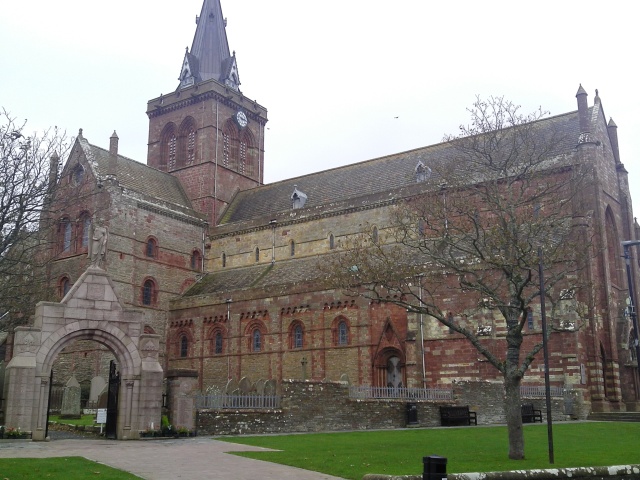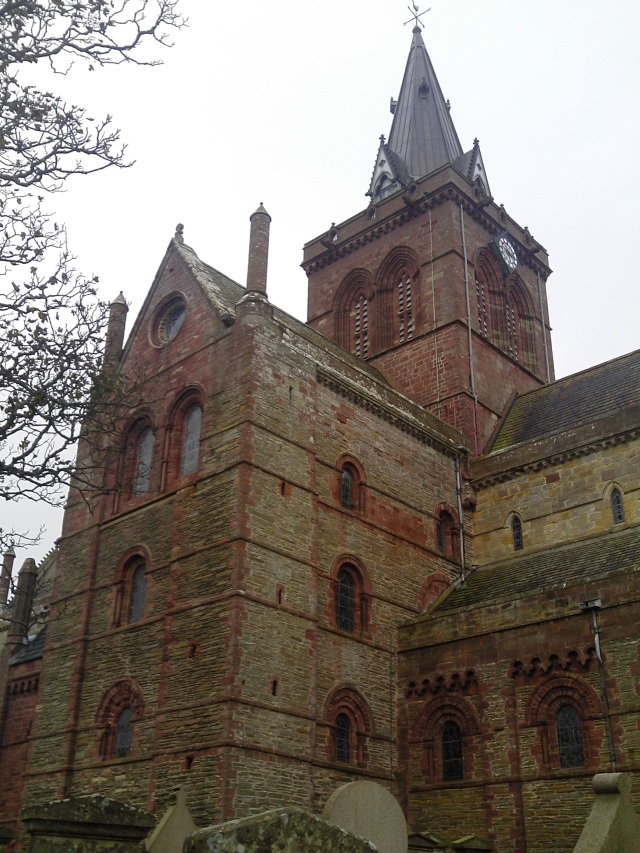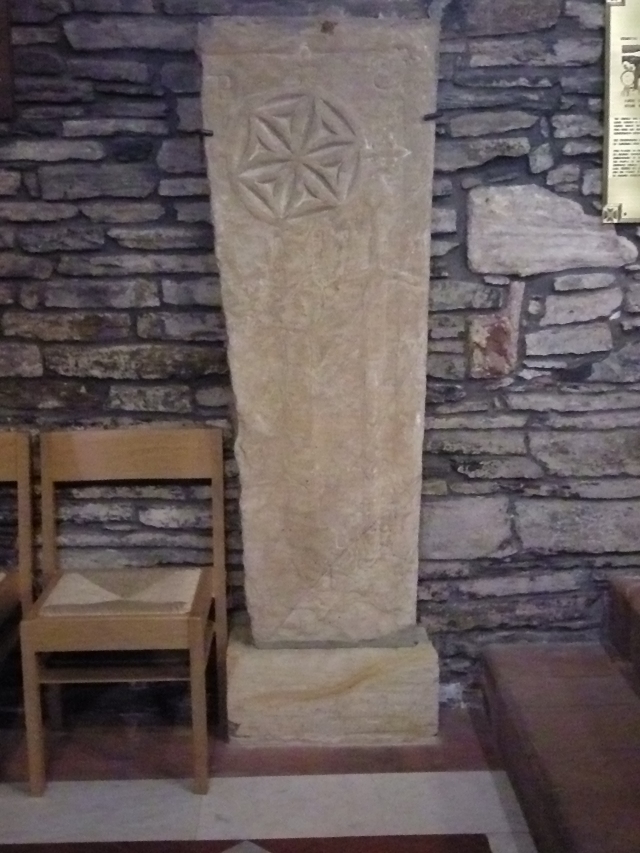After crawling into Neolithic tombs on the first morning of our Orkney holiday, the afternoon was time for a shift to a more recent historic site – St Magnus Cathedral.
Of course, ‘recent’ is relative, if you get my drift. Kirkwall’s impressive cathedral was founded in 1137, by the Viking, Earl Rognvald, in honour of his martyred uncle, St Magnus.
Over the centuries, the building has been part of the Roman Catholic Church, the Norwegian Church, the Scottish Episcopal Church, and the Church of Scotland (Presbyterian).
One of the most striking external features of the building is the use of alternating red and yellow sandstone
The building is huge, and the inside is equally impressive
How about this beautiful floor?
And so to a little more history, paraphrased from Wikipedia
‘St. Magnus had a reputation for piety and gentleness. On a raid led by the King of Norway, Magnus refused to fight and stayed on board singing psalms. The king granted him a share of the earldom of Orkney held by his cousin Håkon, and they ruled amicably as joint Earls of Orkney from 1105 to 1114. Their followers fell out, and the two sides met on Orkney Mainland, ready for battle. Peace was negotiated and the Earls arranged to meet each other on the small island of Egilsay, each bringing only two ships. Magnus arrived with his two ships, but then Håkon treacherously turned up with eight. Magnus was captured and offered to go into exile or prison, but an assembly of chieftains insisted that one earl must die. Håkon’s standard bearer refused to execute Magnus, and an angry Håkon made his cook Lifolf kill Magnus by striking him on the head with an axe.’
‘When the cathedral was ready for consecration, the relics of St Magnus were enshrined in it. In 1917, a hidden cavity in a column was found, containing a box with bones including a skull showing a wound consistent with a blow from an axe.’
There are lots of tombs and memorial stones inside the cathedral
Even an impressive memorial to Dr John Rae, an Orkney born explorer credited with the discovery of the North West passage in Canada.
His grave is in the huge cemetery outside, that looks across to the Bishop’s Palace (pics of that in a later post)
Bringing things even closer in history, the cathedral houses a memorial to those who lost their lives as a result of the sinking of HMS Royal Oak, the first ship to be torpedoed in World War 2, inside Scapa Flow, Orkney’s main harbour.
We were there 2 days before the 80th anniversary. A large service was held in the cathedral to mark the occasion, and that’s when I discovered that my new neighbours in the Highlands had lost a relative in the disaster, and were on the island to attend. However, no matter how we tried, we just couldn’t get our diaries to coincide to allow us to meet up!
You might see why I talked at the start of this series of posts about the incredible range of history to discover on Orkney – from Neolithic to World War 2, and with everything in between.
Stay tuned for more…









































Great piece of info.
Also welcome to visit my blog – thanks
LikeLiked by 1 person
These old cathedrals were amazing. How fun to see it.
LikeLiked by 1 person
Love wandering round old churches and cathedrals ❤
LikeLike
[…] Continue reading at Deborah Jay […]
LikeLike
The area around St Magnus across to the museum is so peaceful and the smell of the stone combined with the scent of the trees would soothe me. Such a beautiful area. xxx
LikeLiked by 1 person
It was lovely, and very peaceful despite plenty of visitors ❤
LikeLike
Deb, fantastic history and photos! Glad I caught it from Sue’s reblog. ❤
LikeLiked by 1 person
Glad you found it! I’m having to get used to very unreliable internet, out here in the wilds, so bear with me if I’m slow replying.
LikeLiked by 1 person
Not going anywhere my friend!!!! Glad you’re safe! ❤
LikeLiked by 1 person
[…] In another change of era, here’s a tour of some medieval ruins: the Bishop’s and Earl’s Palaces in the Orkney capital of Kirkwall, situated opposite St Magnus Cathedral. […]
LikeLike
[…] Orphir is a region of Mainland Orkney where once again we were immersed in history, this time 11th/12th century, and back to the murder of St. Magnus […]
LikeLike